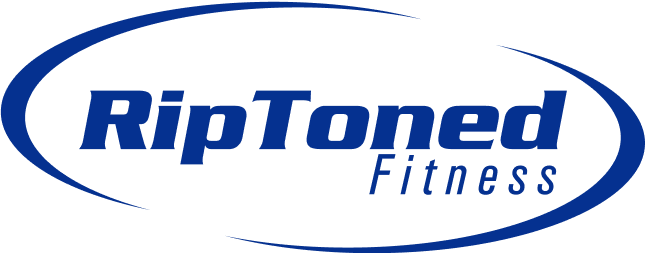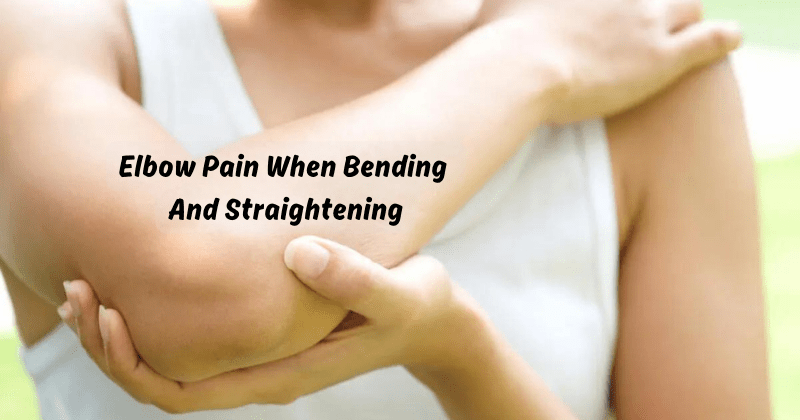
Elbow Pain When Bending And Straightening
Mark PasayShare
Elbow pain is a common condition that can affect people of all ages and occupations. It refers to any discomfort, soreness, or pain experienced in the elbow joint. The elbow joint is the connection between the upper arm bone (humerus) and the two forearm bones (radius and ulna). This complex joint allows for bending and straightening of the arm, as well as rotation of the forearm.
In this guide, we will discuss the causes, symptoms, and treatment options for elbow pain when bending and straightening. We will also explore preventive measures that can help alleviate or avoid this type of pain. Whether you are an athlete, office worker, or anyone experiencing elbow discomfort, this guide aims to provide helpful information about elbow pain management.
Causes of Elbow Pain and Solving the Issue When Bending And Straightening
There are many possible causes for elbow pain when bending and straightening, including:
Tennis Elbow:
Tennis elbow, also known as lateral epicondylitis, is a common cause of elbow pain and discomfort. Despite its name, it can affect anyone who repetitively uses their forearm muscles, not just tennis players. This condition occurs when the tendons that attach to the outer part of the elbow become inflamed or damaged.
Symptoms of tennis elbow include pain and tenderness on the outside of the elbow, weakness in the forearm muscles, and difficulty with gripping or lifting objects. It can also cause pain when bending or straightening the arm.
Treatment options for tennis elbow include rest, ice therapy, physical therapy, and, in severe cases, surgery. Wearing an elbow brace or using a specialized technique during activities can also help prevent tennis elbow from recurring. If left untreated, tennis elbow can become a chronic condition and significantly impact daily activities. Therefore, it is essential to seek medical attention if you experience symptoms of tennis elbow.
Golfer's Elbow:
Similar to tennis elbow, golfer's elbow, also known as medial epicondylitis, is caused by damage or inflammation of the tendons attaching to the inner part of the elbow. This condition is commonly seen in individuals who frequently use their wrists and fingers, such as golfers.
Symptoms of a golfer's elbow include pain and tenderness on the inner side of the elbow, weakness in hand grip, and difficulty bending or straightening the arm. It can also cause numbness or tingling in the fingers.
Treatment for a golfer's elbow includes rest, ice therapy, physical therapy, and sometimes corticosteroid injections. Wearing an elbow brace can also help alleviate symptoms and prevent further injury. In rare cases, surgery may be necessary for severe or chronic cases of golfer's elbow.\
Bursitis:
Bursitis is a condition that occurs when the bursa, a small fluid-filled sac located between bones and tendons, becomes inflamed. This can happen due to overuse or repetitive motions of the elbow joint.
Symptoms of bursitis include pain, swelling, and tenderness around the elbow joint. The affected area may also feel warm to the touch and may limit the range of motion.
Treatment for bursitis includes rest, ice therapy, and physical therapy. In some cases, a doctor may recommend a corticosteroid injection to reduce inflammation. Avoiding activities that aggravate the condition can also help prevent bursitis from recurring.
Osteoarthritis:
Osteoarthritis is a degenerative joint disease that can affect any joint in the body, including the elbow. It occurs when the protective cartilage between bones wears down over time, causing pain and stiffness.
Symptoms of osteoarthritis in the elbow include pain, tenderness, stiffness, and limited range of motion. The pain may worsen with activities that involve bending and straightening of the elbow joint.
Treatment for osteoarthritis includes rest, physical therapy, and pain management techniques such as ice therapy or medication. In severe cases, surgery may be necessary to repair or replace damaged joint tissues.
Repetitive Strain Injury (RSI):
Repetitive strain injury (RSI) is a condition caused by repetitive or strenuous movements, such as those involved in sports or manual labor. These activities can cause damage to tendons and muscles around the elbow joint.
Symptoms of RSI include pain, stiffness, weakness, and numbness in the affected area. The pain may worsen with bending and straightening of the elbow or with certain activities.
Treatment for RSI includes rest, ice therapy, and physical therapy. In severe cases, surgery may be necessary to correct the damage caused by repetitive strain injury.
Cubital Tunnel Syndrome:
Cubital tunnel syndrome is a type of nerve compression that occurs when the ulnar nerve (the "funny bone" nerve) becomes compressed or irritated. This can happen due to repetitive motions, pressure on the elbow, or injury.
Symptoms of cubital tunnel syndrome include pain, tingling, and numbness in the forearm and hand. The symptoms may worsen at night or when using the affected arm for extended periods.
Treatment for cubital tunnel syndrome includes rest, physical therapy, and occasionally, a splint or brace to keep the elbow in a straight position. Surgery may be necessary in severe or chronic cases to relieve pressure on the ulnar nerve.
Elbow Fracture:
An elbow fracture is a break or crack in one of the bones that make up the elbow joint, such as the olecranon, radius, or ulna. This type of injury can cause severe pain and difficulty bending or straightening the elbow.
Symptoms of an elbow fracture include intense pain, swelling, bruising, and deformity in the elbow area. A visible bump or misalignment may also be present.
Treatment for an elbow fracture depends on the severity and location of the injury but typically involves immobilization with a cast, splint, or sling. Surgery may be necessary for more severe fractures to realign and stabilize the bones. Physical therapy is often recommended for rehabilitation after an elbow fracture.
Related Products
Symptoms to Watch Out For:
While each of these conditions has its own set of symptoms, there are a few general warning signs that may indicate an elbow injury or condition. These include:
- Pain, tenderness, or swelling in the elbow joint
- Difficulty bending or straightening the arm
- Weakness in the forearm muscles or hand grip
- Numbness or tingling in the fingers or hand
- Limited range of motion in the elbow
If you experience any of these symptoms, it is important to seek medical attention for proper diagnosis and treatment. Ignoring or pushing through elbow pain can lead to further injury and potentially long-term damage.
Preventive Measures:
To reduce the risk of developing elbow injuries and conditions, it is important to take preventive measures. These include:
- Warming up and stretching before physical activity
- Using proper techniques and form when playing sports or performing repetitive tasks
- Taking breaks and alternating between activities that use different muscle groups
- Strengthening the muscles around the elbow joint through targeted exercises
- He was wearing protective gear, such as elbow pads or braces when participating in sports or activities that put a strain on the elbow joint.
By incorporating these measures into your daily routine, you can help keep your elbows healthy and prevent injuries. Remember to listen to your body and seek medical attention if you experience any pain or discomfort in the elbow area.
Should I Be Concerned?
While elbow pain and discomfort are common, it is important to pay attention to your body and seek medical help if you notice any persistent symptoms. Some conditions, such as golfer's elbow or bursitis, may not require surgery but can become chronic if left untreated.
In severe cases of elbow injuries or conditions, surgery may be necessary for proper healing and pain relief. However, with proper precautions and early treatment, many elbow injuries can be managed without invasive procedures.
Plus, by taking preventive measures and making small adjustments to your daily routine, you can reduce the risk of developing these conditions in the first place. Remember to always listen to your body and seek help if you experience any symptoms or discomfort in your elbows. Your overall joint health is important for maintaining an active and healthy lifestyle.
Does Age Play a Role in Elbow Injuries and Conditions?
Yes, age can be a factor in developing elbow injuries and conditions. As we get older, our joints may become less flexible and more prone to wear and tear. This makes us more susceptible to conditions such as osteoarthritis.
However, this does not mean that younger individuals are immune to elbow injuries and conditions. Repetitive strain injuries, fractures, and other conditions can occur at any age with overuse or injury.
Therefore, it is important to practice preventive measures and listen to your body at any age to maintain healthy elbows and prevent injuries. If you do experience symptoms or discomfort in the elbow area, seeking medical attention as soon as possible can help prevent more serious issues from developing.
Is Whey Protein Beneficial for Joint Health?
Whey protein is a popular supplement among athletes and fitness enthusiasts, but does it have benefits for joint health? Some studies suggest that whey protein may help improve overall joint function and reduce pain in individuals with osteoarthritis.
However, more research is needed to understand the effects of whey protein on joint health fully. Additionally, excessive intake of whey protein may lead to undesirable side effects, such as liver or kidney damage.
Also, it is important to note that whey protein should not be used as a replacement for medical treatment and should be taken in moderation with proper guidance from a healthcare professional.
Tips for Managing and Maintaining Healthy Elbows:
- Practice good posture to reduce strain on the elbows
- Avoid repetitive movements or tasks that put strain on the elbows
- Use proper form and technique when exercising or participating in sports
- Incorporate low-impact exercises into your routine, such as swimming or yoga, to strengthen muscles without putting too much strain on the elbows.
- Eat a balanced diet rich in nutrients that support joint health, such as omega-3 fatty acids and vitamin D
- Take breaks and stretch regularly when performing repetitive tasks or using your elbows for extended periods
- Listen to your body and seek medical attention if you experience any pain or discomfort in the elbow area.
By following these tips, you can help manage and maintain healthy elbows for overall joint health. Remember to always listen to your body and seek medical help if necessary to prevent further injury or chronic conditions.
FAQs
What could be causing my elbow pain when bending and straightening?
Elbow pain when bending and straightening can be caused by various conditions, such as elbow sprains, which occur when the ligaments in the elbow are stretched or torn. Repetitive elbow movements, common in certain sports or jobs, can also lead to overuse injuries, causing pain.
What treatment options are available for elbow pain, and can a physical therapist help?
Elbow pain treatment often involves rest, ice, compression, and elevation (RICE). Over-the-counter pain relievers may also help. Physical therapists can provide manual therapy techniques and exercises to improve mobility and strength and relieve pain.
Could elbow osteoarthritis be a reason why my elbow hurts when I bend and straighten it?
Yes, elbow osteoarthritis, a degenerative joint condition, can cause your elbow to hurt when bending and straightening. The condition results from wear and tear of the elbow joint, leading to pain and stiffness.
Can carpal tunnel syndrome cause elbow pain, and how can I relieve this pain?
Carpal tunnel syndrome primarily affects the wrist and hand, but discomfort can radiate up to the elbow. If you feel pain in the elbow along with numbness and tingling in your hand, consult a healthcare professional. Physical therapists can provide exercises and manual therapy techniques to relieve pain, and if necessary, a doctor might recommend surgery to alleviate symptoms.
Conclusion:
In conclusion, elbow injuries and conditions can be caused by various factors such as overuse, injury, or age. It is important to pay attention to warning signs and seek medical help if necessary to prevent further damage.
By incorporating preventive measures into daily routines and listening to your body, you can maintain healthy elbows and reduce the risk of developing these conditions. Remember to also consult with a healthcare professional before making any significant changes to your diet or exercise routine.
Taking care of your elbow health is crucial for maintaining an active and healthy lifestyle. Keep these tips in mind and stay aware of any symptoms to ensure the health and longevity of your elbows. Stay safe, stay healthy!

Click here to try our best selling Elbow Sleeves to help you protect your Elbows.
Related Posts
-
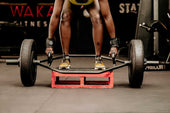
Unlock Your Strength Potential: Conquer Weak Grip Strength Now
...
-
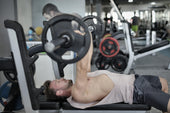
Bench Press to Success - Mastering your form
...
-

5 Tips for Women to Build Lean Muscle Tone in 2024
...
-

How to Get the Most Out of a Lifting Session
...
-

Working Out Under the Weather
...
-
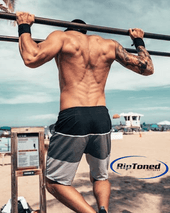
The Lesser-known Benefits of Weightlifting
...
-

How Weight Training Supports Immune Health
...
-

The History of Weightlifting
...
-

Rest up to build up
...
-
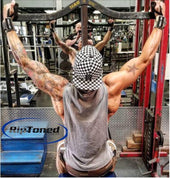
4 Tips to Improve Lifting Gains The Right Way
...
-

4 Tips to Prevent Training Injuries
...
-

Top 3 Work Out Myths EXPOSED!!
...
-

Common Lifting Injuries (And How to Avoid Them)
...
-
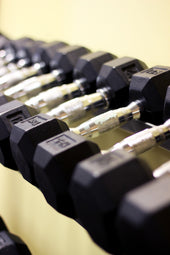
Hit the Gym or Stay at Home?
...
-
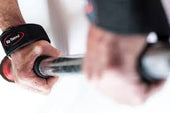
Weightlifting Benefits – Many Health Benefits for Men and Women
...
-

Crush Your PRs: The Gradual Strength Increase Guide for CrossFitters
...
-

Whey vs Collagen Protein: Which Is Best for You?
...
-

Can I Take Whey Protein Without Working Out? What You Need to Know
...
-

Why Does Whey Protein Hurt My Stomach: Causes and Solutions
...
-

Boost Your Run: Should You Take Pre-Workout Before Running?
...
-

Top Pre-Workout Benefits: Boost Energy and Enhance Performance
...
-
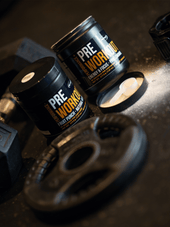
How Long Does Pre-Workout Take to Kick In? Find Out Here!
...
-

How Long Does Pre-Workout Last? Your Essential Guide
...
-

Does Pre-Workout Give You Pimples
...
-

How Long Does Pre-Workout Stay in Your System
...
-

When Should I Take Pre-Workout
...
-

Can I Mix Creatine With Pre-Workout
...
-

Long Term Side Effects of Pre-Workout Supplements
...
-

How Much Caffeine in Pre-Workout
...
-

Pre-Workout Alternatives
...
-

Does Pre-Workout Break a Fast
...
-

What to Eat Pre-Workout
...
-

What is In Pre-Workout
...
-

Advantages of Pre Workout Supplements
...
-

How To Get Rid Of Pre Workout Itch
...
-

How To Make Your Own Pre Workout
...
-

How Many Scoops Of Pre Workout Should I Take
...
-

How Bad Are Pre Workouts For You
...
-

How Long Before A Workout Should I Take Pre-Workout
...
-

How Much Caffeine Is In Bucked Up Pre Workout
...
-

How Long Does Pre Workout Increase Blood Pressure
...
-

What Does Pre Workout Do
...
-

Can I Use Sprite As Pre Workout
...
-

Can Supplements Boost Weightlifting Motivation
...
-

Why Do Weightlifters Wear Belts
...
-

Does Lifting Weights Cause Varicose Veins? What You Need to Know
...
-

Does Lifting Weights Affect Uterus Health? What Women Need to Know
...
-

How Lifting Weights Can Affect Your Sex Drive: Does Lifting Weights Make You Horny?
...
-

Why Don't I Sweat When I Lift Weights? Understanding the Causes
...
-

Why Are Physical Fitness Attitudes Important? Insights & Benefits
...
-

Why is Anytime Fitness So Expensive? Understanding Membership Costs
...
-

Substitute For Whey Protein Powder In Keto Baking
...
-

How Many Calories Does 1 Hour of Weightlifting Burn
...
-

A Guide To Cleaner Protein Supplementation
...
-

What Causes The Frothiness in Your Fitness Drink
...
-

How to Take Collagen Safely After a Gastric Bypass: Essential Tips
...
-

Why Do Protein Shakes Make Me Nauseous? Top Reasons and Solutions
...
-

Why Does My Stomach Hurt After Protein Shake? Understanding Your Digestive Discomfort
...
-

Can I Take Collagen After Gastric Bypass
...
-

Why Does My Protein Shake Foam
...
-

How Long to See Effects of Collagen
...
-

Can Diabetics Drink Protein Drinks
...
-

How Fast Should You Drink Protein Shakes
...
-

Can You Drink Protein Shakes While Fasting
...
-

Is Organic Protein Powder Good for Weight Loss
...
-

Can Wrist Wraps Boost Your Grip Strength in Weightlifting?
...
-

Should You Use Wrist Wraps for Bench Press and Overhead Press?
...
-

Do Wrist Wraps Help with Wrist Pain During Strength Training? Find Out Here
...
-

How Can Wrist Wraps Prevent Injury During Heavy Lifting?
...
-

How Do You Use Weightlifting Straps: A Simple Guide for Better Lifts
...
-

How to Pick a Lifting Belt: A Practical Guide for Every Lifter
...
-

How to Measure for Lifting Belt
...
-

Do Weight Lifting Belts Help Lower Back Pain
...
-

Do I Need a Lifting Belt
...
-
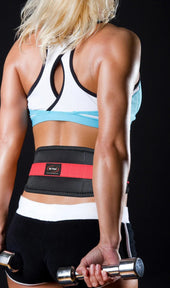
Purpose of Weight Lifting Belt
...
-

When to Use a Lifting Belt
...
-

What Does A Lifting Belt Do
...
-

What Do Wrist Wraps Do For Lifting
...
-
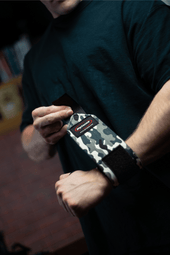
How To Wrap A Wrist For Carpal Tunnel
...
-

How To Wrap Wrist For Pain
...
-

What Are Wrist Wraps For
...
-

How Do You Use Weightlifting Straps
...
-

Why Is Mental Focus Important in Powerlifting? The Key to Peak Performance
...
-

Can Bodybuilding Help with Fat Loss? Discover Proven Benefits
...
-

Mastering the Basics: How to Improve Your Powerlifting Technique
...
-

Why Is Proper Form Crucial in Powerlifting? Tips for Safe and Effective Lifting
...
-

Can Powerlifting Increase Athletic Performance? Exploring Strength Gains and Sport Benefits
...
-

Top Tips on How to Avoid Common Injuries in Bodybuilding
...
-

Why Is Recovery Essential in Bodybuilding: Key Strategies and Benefits
...
-

Can Powerlifting Improve Overall Fitness? Explained
...
-

Why Is Nutrition Important in Bodybuilding? Top Reasons Explained
...
-

Can Fitness Habit Creation Lead to Long-Term Success? Here's What You Need to Know
...
-

How to Build a Consistent Weightlifting Routine
...
-

Can Fitness Habit Creation Lead to Long Term Success
...
-

Why Do Weightlifters Need A Strong Mindset
...
-

Can Weightlifting Improve Mental Resilience
...
-

Why is Determination Key in Weightlifting
...
-

How to Create a Fitness Habit That Lasts
...
-

How to Stay Motivated in Weightlifting
...
-

Weightlifting: Your Resilience Workout
...
-

How Does Weightlifting Build Resilience
...
-

Common Powerlifting Injuries
...
-

What is Raw Powerlifting
...
-

What to Eat Before a Powerlifting Meet
...
-

Is Powerlifting Bad for Your Heart
...
-

What is a Powerlifter
...
-

What is Powerlifting
...
-

Why Do Powerlifters Eat Candy
...
-

What Does RPE Mean In Powerlifting
...
-

What Do Powerlifters Sniff Before A Heavy Lift
...
-

Is A Belt Acceptable In A Powerlifting Meet
...
-

Can Powerlifting Build Muscle? Expert Insights and Tips
...
-

Why Are Powerlifters Fat? The Real Reasons Explained
...
-

The Best Guide to Powerlifting After Shoulder Replacement
...
-

Powerlifting vs Bodybuilding: Key Comparisons and Benefits
...
-
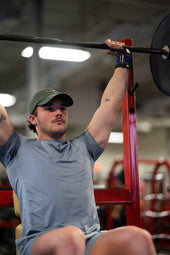
Unlock Your Potential: How to Get Stronger Gradually
...
-

Unlock Muscle Growth: Understanding What Is the 6-12-25 Rule
...
-

5 Lbs of Muscle in a Month? Let's Get Real
...
-
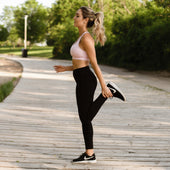
Get that celebrity booty in 10 easy to do work out routines
...
-

A.M. vs P.M. Workouts
...
-
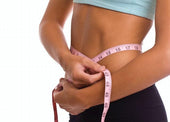
Fasting Do’s and Dont's
...
-

5 Surprising Sources of Protein
...
-
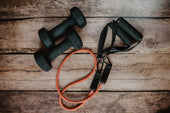
Home Workout Upgrade Must-haves
...
-
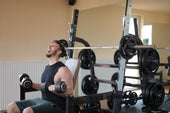
Top 5 Reasons You Aren’t Reaching Your Weightlifting Goals
...
-
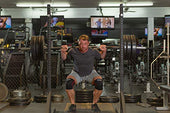
Squats: A Must in Weightlifting and for Strength Training
...
-

Weightlifting Routines for Men, Women and Beginners
...
